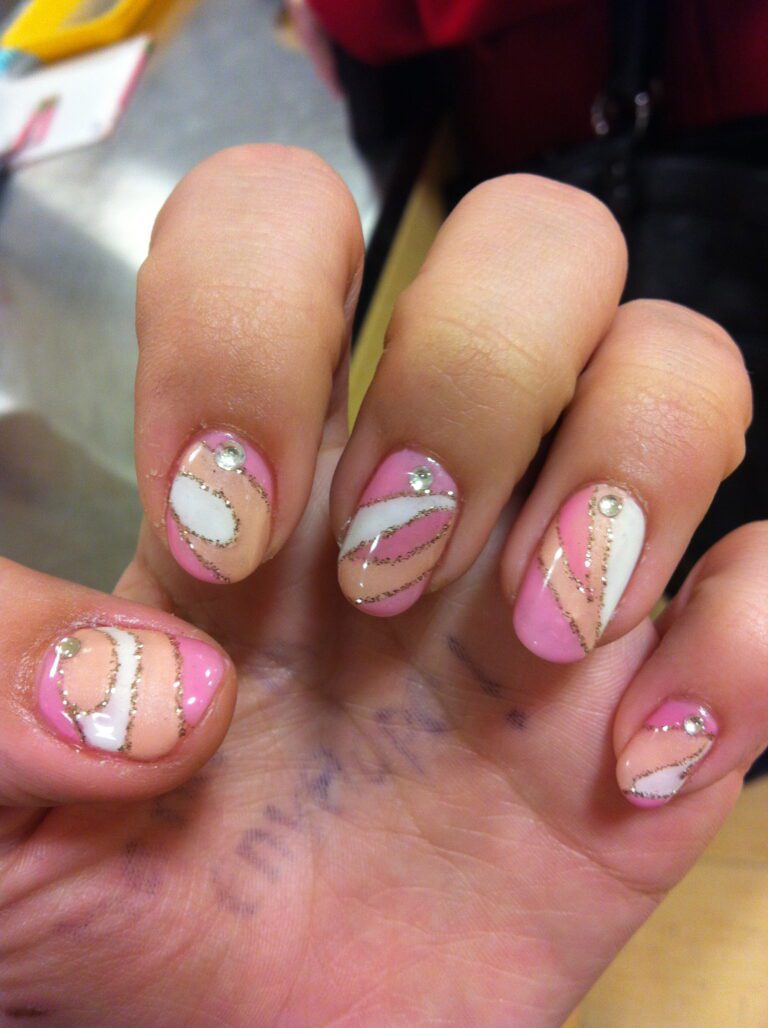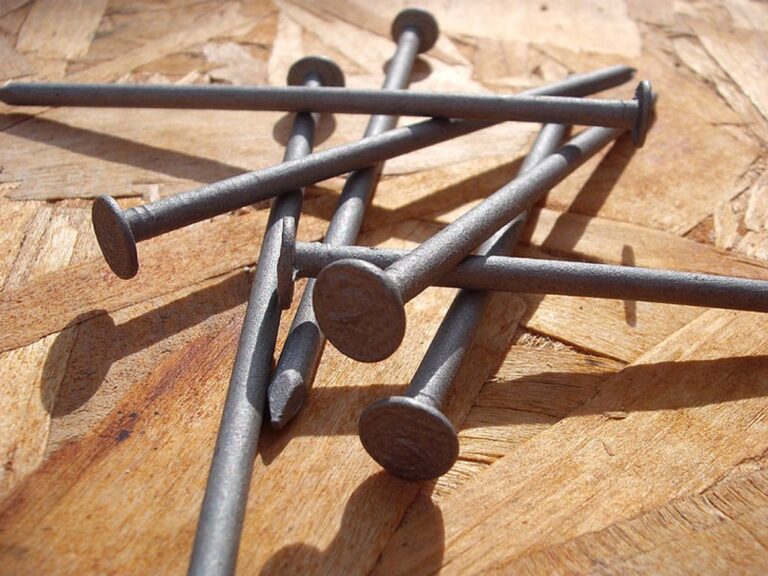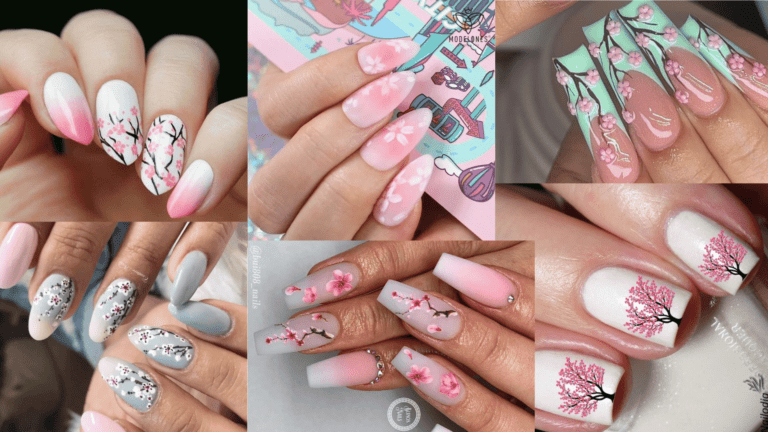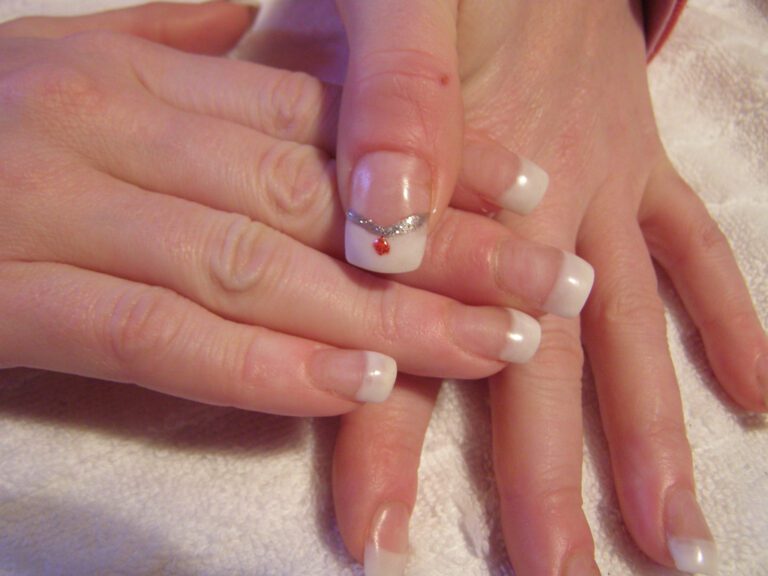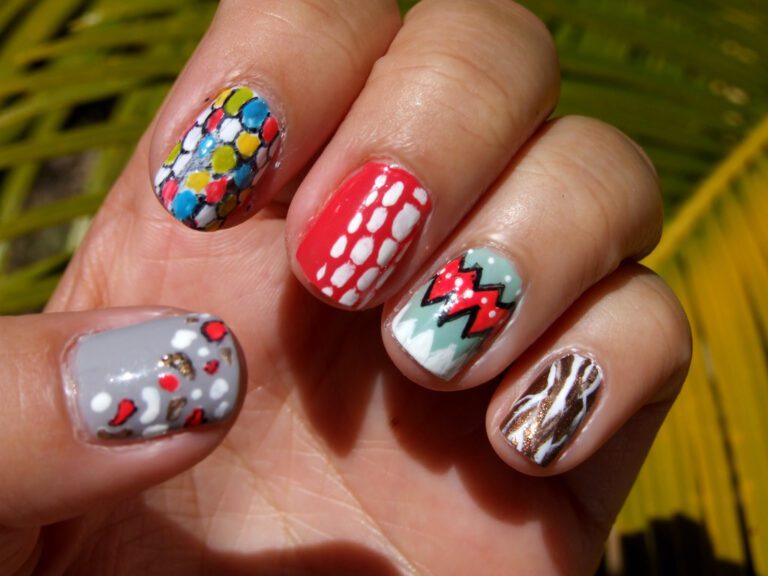“The Resilience of Nails: How They Grow Back”
Nails are a fascinating part of the human body, with the ability to grow back after damage. Understanding the anatomy, growth cycle, and healing process of nails is essential for proper care and maintenance. In this article, we will explore the resilience of nails and the factors that influence their regrowth.
Key Takeaways
- Nail growth is influenced by factors such as nutrition, age, hormones, and circulation.
- Proper nail hygiene and protective measures are crucial during the regrowth process.
- Trauma and damage to nails can have both immediate and long-term effects on their health.
- Medical conditions, including fungal infections and systemic diseases, can impact nail regrowth.
- Professional care should be sought when experiencing severe nail trauma or persistent nail disorders.
Understanding Nail Anatomy and Growth

The Structure of the Nail
The human nail is a complex structure composed of several different parts, each playing a vital role in protection and sensation. At the core of the nail’s anatomy is the nail plate, which is made up of densely packed, keratinized cells. These cells are layered and flattened, giving the nail its characteristic hard, yet slightly flexible, quality.
Beneath the nail plate lies the nail bed, which is rich in blood vessels and nerves, providing the nail plate with nutrients and sensation. The cuticle, or eponychium, acts as a protective seal at the base of the nail, preventing pathogens from entering the nail matrix where new nail cells are generated.
Proper care and maintenance of these components are essential for healthy nail growth and resilience. Regular moisturizing of the cuticle and keeping the nail plate clean can prevent many common nail problems.
Remember: Keeping nails trimmed and filed can help maintain their strength and prevent breakage or splitting, which is crucial during the regrowth process after any damage.
The Nail Growth Cycle
The nail growth cycle is a continuous process that involves several stages, each crucial for healthy nail development. Initially, new cells are produced in the matrix, the area under the cuticle, which is the growth center of the nail. As these cells mature, they harden and are pushed outwards, forming the visible part of the nail known as the nail plate.
- Onychocytes, the hardened cells, move through three primary phases:
- The growth phase (anagen)
- The transitional phase (catagen)
- The resting phase (telogen)
During the anagen phase, the cells divide rapidly, contributing to the lengthening of the nail. In the catagen phase, the growth slows down, and the nail begins to detach from the underlying nail bed. Finally, in the telogen phase, the nail stops growing, and the old nail prepares to be replaced by new growth.
Tip: To support a healthy nail growth cycle, maintain a balanced diet and protect your nails from physical damage. Regular moisturizing can also help keep the nail and surrounding skin supple, reducing the risk of breakage.
Factors Influencing Nail Growth
The rate and health of nail growth are not uniform across all individuals, as they are subject to a variety of influences. Nutrition plays a crucial role, with a balanced diet rich in vitamins and minerals being essential for strong and healthy nails. For instance, protein, vitamin D, and calcium are vital for nail integrity.
External factors such as the environment and exposure to chemicals can also affect nail growth. Frequent contact with water or cleaning agents can weaken nails, while seasonal changes may alter their growth patterns. Moreover, the state of one’s overall health and the presence of medical conditions can have a significant impact. For example, circulatory health is important as it determines the blood flow to the nail beds, supplying them with necessary nutrients.
Tip: To promote healthy nail growth, consider wearing gloves when using cleaning products and avoid excessive water exposure.
Stress and hormonal changes are additional factors that can influence nail growth. Periods of high stress can lead to slower growth or weaker nails, while hormonal fluctuations during events such as pregnancy or menopause can cause changes in growth rate and nail strength.
Trauma and Nail Damage

Common Types of Nail Injuries
Nail injuries can result from a variety of traumas, including impacts, cuts, or pinching of the nail. These injuries can lead to bruising, separation, or other forms of damage. Nail bed injuries, in particular, can cause a number of nail abnormalities such as nonadherence, split nails, and linear ridging. It’s important to be aware of the different types of nail injuries and their potential impact on nail health. Understanding the nature of these injuries is crucial for effective treatment and recovery.
Immediate Responses to Nail Trauma
Following nail trauma, the body initiates an immediate response to protect and begin the healing process. One of the most common symptoms is a subungual hematoma, where blood collects under the nail plate, causing sudden, throbbing pain due to increased pressure.
The body’s natural defense mechanisms kick in, leading to inflammation and swelling. This is a critical phase as it helps to isolate the damaged area and prevent infection. In some cases, the nail may become loose or even detach from the nail bed if the injury is severe.
Tip: If you experience a nail injury, it’s important to keep the area clean and avoid further trauma to support the natural healing process.
Immediate care often involves relieving pressure, if necessary, through medical intervention, such as creating a small hole in the nail plate to allow blood to escape. This procedure should only be performed by a healthcare professional to prevent additional damage.
Long-Term Nail Damage Considerations
When considering the long-term effects of nail trauma, it’s essential to recognize that nails are not just a cosmetic feature but a functional part of our body that can indicate overall health. Repeated or severe damage to the nail can lead to chronic conditions that may alter the nail’s appearance and structure permanently.
-
Chronic nail conditions can manifest as persistent discoloration, abnormal nail shapes, or a tendency for nails to become brittle or split. These conditions often require prolonged and sometimes complex treatment strategies.
-
Nail infections, particularly fungal, can become entrenched and difficult to eradicate, especially if the nail bed has been compromised. This underscores the importance of early and appropriate intervention.
Tip: Consistent care and protection of nails during recovery are crucial to prevent long-term complications and to promote healthy regrowth.
Understanding the potential for long-term damage is vital for setting realistic expectations for nail recovery and for implementing the best care practices to support nail health.
The Healing Process of Nails

Biological Mechanisms Behind Nail Regeneration
The process of nail regeneration is a testament to the body’s remarkable ability to repair itself. At the core of this process are the keratinocytes, cells in the nail matrix responsible for the production of keratin, the primary component of the nail plate. These cells undergo rapid division, pushing older cells forward to form the visible part of the nail.
Stem cells within the nail matrix play a crucial role in initiating nail growth. They provide a continuous supply of new cells that differentiate into specialized nail cells. This regenerative cycle is influenced by various growth factors and signaling pathways that ensure the nail maintains its strength and structure.
- Growth Factors: Essential proteins that stimulate cell proliferation.
- Signaling Pathways: Biochemical routes that govern cellular processes.
- Stem Cells: Undifferentiated cells with the potential to become nail cells.
Tip: To support nail regeneration, maintaining a balanced diet rich in proteins and vitamins is vital, as these nutrients are the building blocks of keratin.
Phases of Nail Recovery
The recovery of a nail after trauma occurs in distinct phases, each critical to the restoration of the nail’s structure and function. Initially, there is an inflammatory phase, where the body’s natural response to injury kicks in to protect against infection and starts the healing process. This is followed by a proliferative phase, characterized by the growth of new nail cells at the nail matrix, the area under the cuticle where nail growth begins.
Subsequently, the maturation phase sees these new cells harden and take on the familiar flat, hardened form of the nail plate. This phase is crucial as it determines the final shape and strength of the new nail. Throughout these phases, proper care and nutrition can significantly influence the outcome of the regrowth.
Tip: Keeping the nail and surrounding skin moisturized can help prevent complications and aid in a smoother recovery process.
Time Frame for Nail Regrowth
The time it takes for nails to regrow can vary widely depending on several factors, including the extent of the injury, the individual’s age, and their overall health. Generally, fingernails grow at an average rate of approximately 0.1 inches (2.5 mm) per month. To put this into perspective:
- A slight trim may take a few weeks to grow out.
- More significant damage, such as a nail torn off, will require several months to return to its original length.
Toenails grow more slowly, often taking twice as long as fingernails to regrow fully. Here is a simple breakdown of the expected time frames for nail regrowth:
| Nail Type | Regrowth Time Frame |
|---|---|
| Fingernails | 3-6 months |
| Toenails | 6-12 months |
Tip: Patience is key during the regrowth process. Avoiding further trauma and maintaining proper nail care can help ensure healthy nail recovery.
It’s important to note that these are average estimates and individual experiences may vary. Factors such as nutrition, circulation, and hormonal changes can all influence the rate of nail growth. If you notice that your nails are not regrowing as expected, it may be beneficial to consult a healthcare professional.
Factors Affecting Nail Regrowth

Nutritional Influences on Nail Health
Nutrition plays a crucial role in maintaining the health and strength of nails. A balanced diet rich in essential nutrients such as protein, iron, and biotin is vital for promoting optimal nail growth and resilience. Here’s a brief overview of the key nutrients and their impact on nail health:
| Nutrient | Impact on Nail Health |
|---|---|
| Protein | Supports nail structure and growth |
| Iron | Helps prevent brittle nails |
| Biotin | Promotes overall nail health and strength |
It’s important to ensure that your diet includes these essential nutrients to support the natural regrowth and strength of your nails.
Remember, a well-balanced diet is the foundation for healthy nails. Incorporating these key nutrients can significantly contribute to the resilience and vitality of your nails.
Impact of Age and Hormones
The regrowth and health of nails are significantly influenced by age and hormonal fluctuations. As individuals age, the rate of nail growth tends to slow down. This is partly due to a decrease in circulation and changes in hormonal balance, which are natural parts of the aging process.
Hormones play a pivotal role in nail health. For example, thyroid hormones are known to affect the metabolism of nail cells. An imbalance can lead to brittle nails or abnormal growth patterns. During pregnancy, increased hormone levels can actually accelerate nail growth, while menopause often has the opposite effect due to a decrease in estrogen levels.
Tip: Maintaining a balanced diet and staying hydrated can help mitigate the effects of aging and hormonal changes on nail health.
It’s important to recognize that while age and hormones can influence nail regrowth, they are just part of a complex interplay of factors. Good nail care and awareness of these changes can help in maintaining nail strength and health throughout one’s life.
The Role of Circulation in Nail Repair
Proper blood circulation plays a pivotal role in the repair and regrowth of nails. The blood delivers essential nutrients and oxygen to the nail bed, fostering a healthy environment for growth. Poor circulation can lead to slower nail growth and may even affect the overall health of the nails.
To enhance circulation to the nails, consider incorporating activities that boost blood flow. Gentle massages during manicures and pedicures, as well as occasional nail buffing, can stimulate circulation. Additionally, the use of cuticle oil is not only beneficial for moisturizing but also for promoting blood flow around the nails.
Tip: Regularly massaging your hands and feet can improve circulation, which in turn supports nail repair and growth.
Remember, while external treatments can aid circulation, internal factors such as hydration, nutrition, and overall health significantly influence blood flow to the extremities. Therefore, maintaining a balanced diet and staying hydrated are crucial for optimal nail health.
Caring for Your Nails During Regrowth
Protective Measures and Treatments
After undergoing trauma or damage, it is crucial to implement protective measures and treatments to support the regrowth process. Regular moisturization and avoidance of harsh chemicals are essential for maintaining the health of the regrowing nails. Additionally, protective nail coatings can provide a layer of defense against further damage. It’s important to be mindful of the products and practices that come into contact with the regrowing nails to ensure optimal recovery. Seeking professional care for specialized treatments and guidance is advisable for complex cases. Remember, patience and consistent care are key to successful nail regrowth.
Appropriate Nail Hygiene Practices
Maintaining proper nail hygiene is crucial for healthy regrowth. It’s important to keep nails clean and dry, as moisture can harbor bacteria and lead to infections. Regularly trim your nails to prevent them from snagging and breaking, which can cause further damage to the nail bed.
- Use sharp nail scissors or clippers for a clean cut, and avoid tearing or biting your nails. After trimming, gently file your nails to smooth any rough edges, moving the file in one direction to minimize stress on the nail.
Remember: Overzealous nail care can be detrimental. Avoid excessive filing or buffing, as this can weaken the nail structure.
Incorporate a moisturizer into your nail care routine to keep the cuticles and nails hydrated. This not only improves the appearance of your nails but also promotes elasticity, reducing the risk of cracks and splits.
When to Seek Professional Care
While many nail conditions can be managed with proper home care, certain situations warrant the attention of a healthcare professional. Persistent symptoms such as severe pain, swelling, or discoloration should not be ignored. Additionally, if you notice any signs of infection, like pus or red streaks leading from the nail, it’s crucial to seek medical advice promptly.
Tip: Always err on the side of caution. If you’re unsure about the severity of your nail condition, it’s better to consult a professional than to wait and see.
In cases where nails are growing abnormally, such as toenails growing sideways, this could indicate an underlying issue that requires professional intervention. Similarly, changes in nail texture, thickness, or color as you age may also necessitate a visit to a healthcare provider to rule out any serious conditions.
Medical Conditions and Nail Regrowth

Fungal Infections and Their Impact on Nails
Fungal nail infections, or onychomycosis, represent a common challenge to nail regrowth. These infections are caused by various forms of fungi, molds, and yeasts that infiltrate the nail bed, leading to discoloration, thickening, and sometimes pain. The presence of fungi not only damages the nail’s structure but also hinders the normal growth cycle.
Effective treatment of fungal infections is crucial for restoring nail health. Antifungal medications can be prescribed, but patients should be aware of potential side effects such as headaches and itching. It’s important to note that even with treatment, full nail regrowth can be a lengthy process, often taking a year or more.
Prevention plays a key role in managing nail health. Incorporating proper foot and nail hygiene practices can significantly reduce the risk of fungal infections. Simple measures like keeping nails clean and dry, avoiding shared footwear, and exercising caution during manicures can help maintain the integrity of the nail’s protective barriers.
Tip: Always dry your feet thoroughly after washing, especially between the toes, to minimize the risk of fungal infections.
Systemic Diseases Affecting Nail Growth
Systemic diseases can have a significant impact on nail growth. Conditions such as psoriasis, diabetes, and autoimmune disorders can affect the health and appearance of nails. In some cases, these systemic diseases may lead to changes in nail texture, color, and shape. It’s essential to monitor the condition of your nails and seek professional care if you notice any unusual changes. Additionally, maintaining overall health and managing systemic conditions can contribute to improved nail regrowth and health.
When dealing with systemic diseases affecting nail growth, it’s important to consider the following:
- Regular monitoring of nail health and appearance
- Consulting with a healthcare professional for personalized guidance
- Implementing lifestyle changes to manage systemic conditions
Seeking professional care and staying informed about the impact of systemic diseases on nail regrowth is crucial for maintaining nail health and overall well-being.
Nail Disorders and Genetic Factors
Nail disorders and genetic factors play a significant role in the regrowth process. Understanding the genetic underpinnings of conditions such as Nail-patella syndrome, Darier disease, and other rare genetic disorders provides valuable insights into the complexities of nail regeneration. These conditions are often characterized by unique nail abnormalities and require specialized care. Additionally, acquired nail diseases in children, including trauma-induced, infectious, and inflammatory disorders, contribute to the diverse landscape of nail regrowth challenges. It’s essential to consider both congenital and acquired nail disorders when addressing nail regrowth.
If you’re struggling with nail regrowth due to medical conditions, NAILinspire.com is here to help. Our comprehensive online library provides valuable resources and tips for promoting healthy nail growth. From expert advice to inspiring nail art designs, we’ve got you covered. Visit NAILinspire.com today and discover the ultimate destination for all things nails.
Frequently Asked Questions
How long does it take for a nail to grow back after an injury?
Nail growth after an injury can vary depending on the severity and location of the damage. On average, fingernails can take about 4 to 6 months to fully regrow, while toenails may take 12 to 18 months.
Can nail growth be accelerated through certain treatments or products?
While some treatments and products claim to accelerate nail growth, there is limited scientific evidence to support these claims. Proper nail care and a balanced diet are more effective in promoting healthy nail growth.
What role do nutrients play in nail regrowth?
Nutrients such as protein, biotin, and vitamins A and C play a crucial role in supporting nail health and regrowth. A balanced diet that includes these nutrients can contribute to stronger and faster nail regrowth.
How can I protect my nails during the regrowth process?
To protect your nails during regrowth, avoid excessive exposure to water, use gloves when doing household chores, and refrain from using harsh chemicals on your nails. Keeping your nails moisturized and trimmed can also aid in the regrowth process.
When should I seek professional care for nail regrowth issues?
If you experience persistent pain, unusual changes in nail color or texture, or slow and abnormal nail regrowth, it is advisable to seek professional care from a dermatologist or healthcare provider.
Are there any medical conditions that can hinder nail regrowth?
Yes, certain medical conditions such as fungal infections, psoriasis, and autoimmune disorders can impact nail regrowth. It is important to address these underlying conditions to promote healthy nail regeneration.


